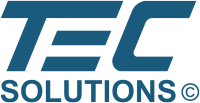 About CyberLock Security
About CyberLock Security
There is no perfect security system. Each and every access control system has multiple vulnerabilities. In an ideal system, the risk associated with all possible vulnerabilities is acceptably low when weighed against the cost and inconvenience of further mitigating those risks.
Since 2000, CyberLock systems have provided economical key control and audit trail solutions to facilities worldwide. The locks offer both physical and logical security. Over the years, physical security risks have been mitigated by offering, among other features, CyberLock models that incorporate tamper pins and extra drill resistance.
All CyberLock administrators and users should maintain minimum logical security by keeping access code and login passwords secure, for example by limiting access to the computer and database of the system. To achieve secure key control and maintain accurate audit trails, all systems should be configured to expire and renew their CyberKey electronic keys on a regular basis.
CyberLock systems provide many additional features to further mitigate risk. These features may be used at the discretion of the system administrator. Some examples include:
- PINs - Requiring PIN entry at communicators allows validation of a person prior to updating their key.
- CyberKey Vaults - Vaults provide an added layer of key control whereby the key holder returns the key to a secure cabinet at the end of a working shift rather than taking it home for possible tampering.
- Multi-key or Lock Open Delay - CyberLock cylinders may be configured such that two or more keys must be presented in succession to open the lock. An open delay prevents a key from opening the lock for up to 17 minutes after first contact.
- Lost Keys - Unexpired CyberKey electronic keys that are lost or stolen may thereafter be used to open an authorized lock. This risk is prevented by programming one or more locks in the system to deny access to that key and optionally to disable the key at the same time.
- Changing Access Codes - The system administrator may "re-key" CyberLock cylinders by changing the lock access codes. This may be done proactively or in response to a known system compromise. Rolling Access Codes (CyberAudit-Web Enterprise) is a feature that can help an administrator configure this process to occur proactively.
- Password Rules and Expiration Policies - Provides additional safeguards for CyberAudit software administrator logins. (CyberAudit-Web Enterprise)
- Multiple Access Codes - Different CyberLock cylinders may be programmed with unique access codes. Typically this is used to limit the scope of master keys but also mitigates risk associated with breach of a lock access code password. (CyberAudit-Web Enterprise)
- Secure Random Access Code Generation - CyberLock access codes generated randomly using the server's cryptographic strength random number generator. Access codes generated this way have no predictable pattern and cannot be guessed.

